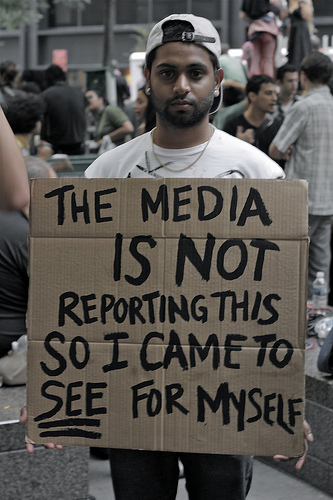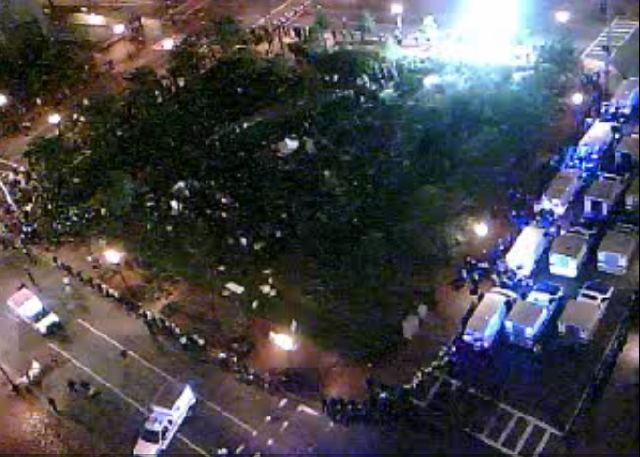Tactic: Making the Occupation Visible
Commentators and participants have talked about the Occupation as an example of what Hakim Bey has called “temporary autonomous zone.” As Nathan Schneider put it, “the demand, so far, appears to be a process—one in which all people can speak and money can’t.” Although the Occupation is no doubt best experienced through the act of occupying, people have used various forms of media to make that activity visual and spreadable.

Critiques of mainstream media coverage, no doubt, spurred much of the DIY and grassroots media coming out of Occupy.
Media produced by Occupiers, such as the OWSJ has become an important aspect of the movement, both as an explicit critique of mainstream media coverage and as an outlet for protesters and supporters to create their own stories and transmit information.
The Whole World is Watching: In the early hours of Oct 11, OccupyBoston faced a wave of police violence and arrests. Over 8,000 people were reported to be watching the livestream at 3am EST.
Mapping the occupation: The movement’s traction is manifest in yet another kind of visual: the map. These maps both document and potentially instigate change and expansion of the movement and its messages. The maps show community and grassroots activism at work, attesting to the movement’s decentralization but also its fundamental inclusiveness.
Scrapbooking the Occupation: The Awwccupy Wallstreet tumblr shows pictures of the cuter and less threatening members of the occupation. The presence of puppies and babies at the occupations is good for a laugh, but it also frames the camps as peaceful, inclusive places
Next: Final Thoughts






[…] Visual Culture of the Occupation. […]